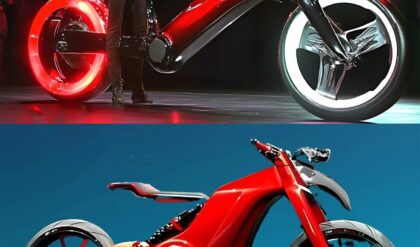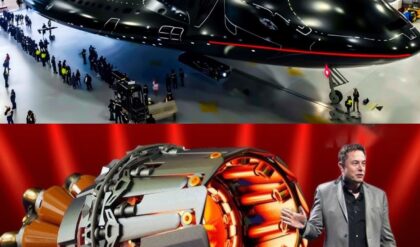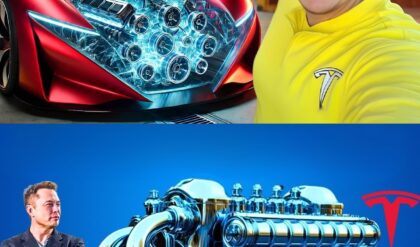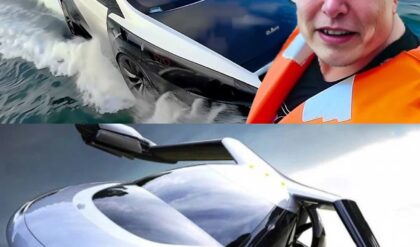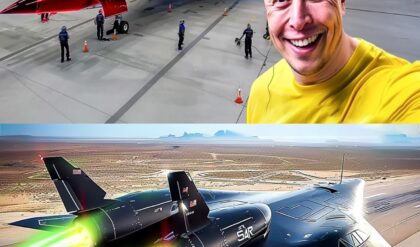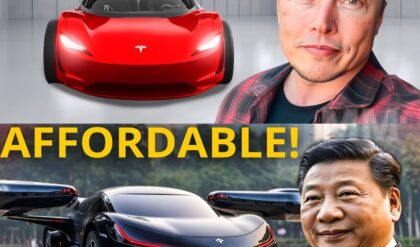In a surprising announcement that has created quite a stir across the globe, Elon Musk has revealed Tesla’s first flying car – the Tesla Model A. This revolutionary vehicle promises to redefine the concept of transportation by taking us to the sky, eliminating the problems of traditional road systems, bypassing traffic and offering a futuristic vision of urban mobility.

Elon Musk has always had one clear goal: to transform the way we move. During a press event, Musk stated, “If you can take your transportation system into the third dimension, you can solve the entire traffic problem .” He added that moving beyond the limitations of two-dimensional roads would be key to a future with faster and more efficient transportation.
The Tesla Model A is the result of years of research and development, combining Tesla’s commitment to sustainable technology and Musk’s dream of an aerial age. Unlike traditional flying vehicles that rely on fossil fuels, the Model A is fully electric, powered by Tesla’s advanced battery systems.

The Tesla Model A’s powertrain marks a significant advance over traditional vehicles. With high-energy-density batteries and fast charging, the Model A ensures efficient travel both on the ground and in the air. Its design includes multiple electric fans for vertical takeoff and landing (VTOL), allowing it to operate in tight spaces, which is ideal for urban environments.
In terms of safety, the Model A features Tesla’s Autopilot system, known for its precision and adaptability. Using cameras, radars, and ultrasonic sensors, this system allows the vehicle to navigate the skies, avoiding obstacles and adjusting routes in real time. It also incorporates backup systems, including a ballistic parachute for emergencies.

While the potential for flying cars is exciting, there are still significant challenges, especially when it comes to air traffic regulation. Currently, airspace management systems are not designed for personal vehicles. To address this, Tesla is collaborating with the Federal Aviation Administration (FAA) and other international bodies to establish new urban air mobility regulations.
Tesla is also proposing the creation of “urban airspaces,” with flying cars operating in low-altitude zones. The company is exploring the installation of “skyports,” or landing zones, on the roofs of buildings, facilitating takeoffs and landings from homes or workplaces.

The arrival of flying cars will dramatically change urban landscapes. Planners will need to rethink the use of space, including parking infrastructure and access to skyports. Imagine a city where buildings have landing pads and travelers can avoid traffic by flying directly to their destination.
However, the question of accessibility also arises. Will this technology be an exclusive luxury or will it be accessible to all? Ensuring equitable distribution will be crucial to the success of this development.
In environmental terms, electric flying cars could reduce traffic congestion and carbon emissions in urban areas, contributing to a cleaner and more efficient environment.
The Tesla Model A isn’t just a flying car; it’s a glimpse into the future of transportation. By embracing 3D mobility, we could solve traffic problems, reduce commute times, and completely transform our cities and the way we interact with our environment.
If the Tesla Model A can overcome regulatory and technological challenges, it will not only change our transportation systems, but could also revolutionize urban design and global mobility.
With this innovation on the horizon, it’s clear that the future of transportation isn’t on the ground, but in the sky. Elon Musk has made his vision of a world with flying cars a reality, ushering in a new era in mobility.
